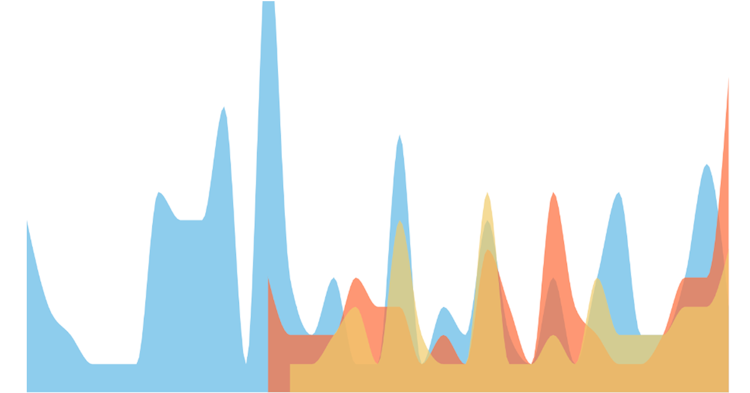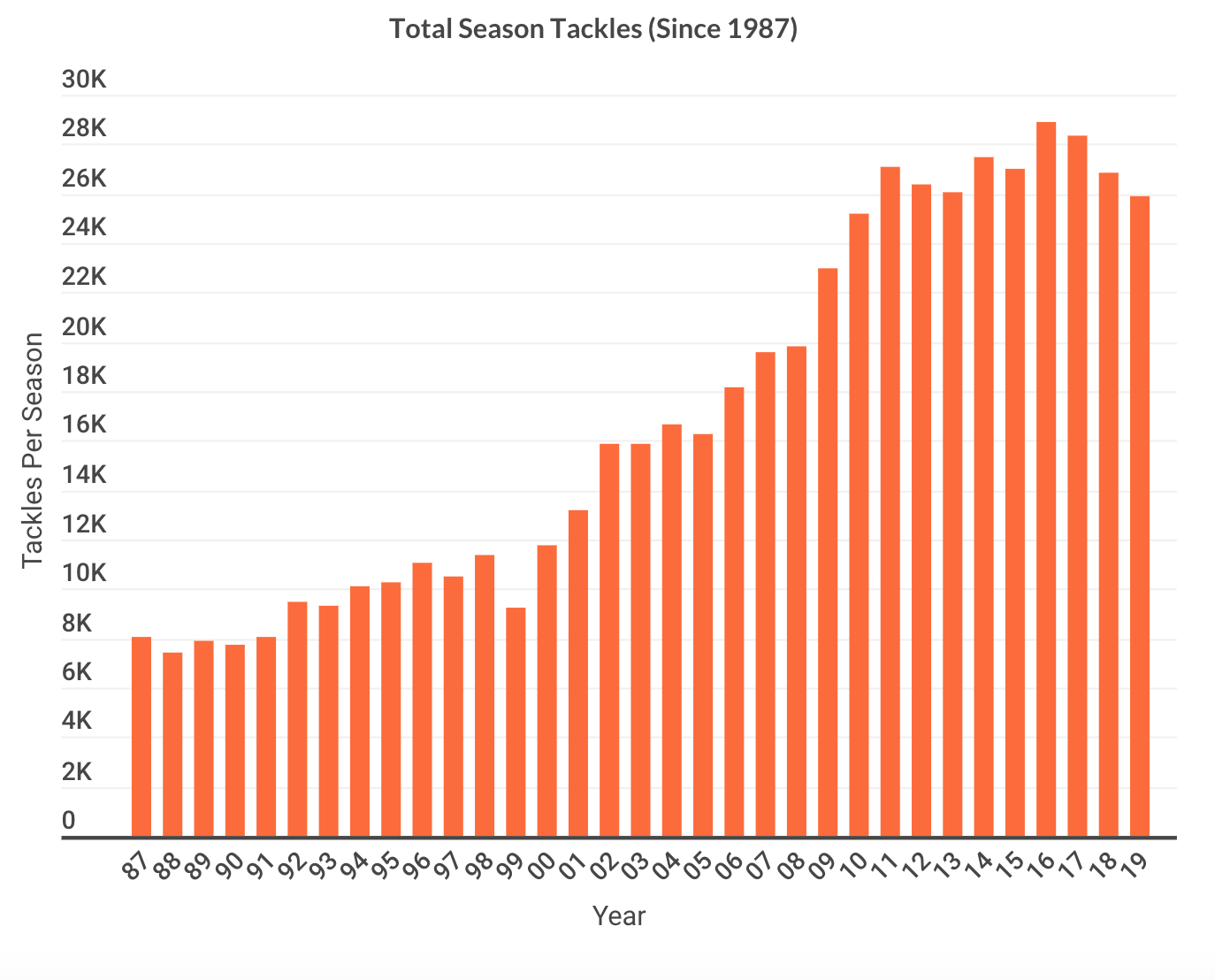AFL | Stats That Matter: The 'Hard Ball'
Last updated: Apr 6, 2020, 7:18AM | Published: Apr 6, 2020, 4:01AM
The hard ball.
There are few aspects of Australian rules football so ingrained in nostalgia and so woven into the apparent fabric of our sport.
We’re routinely reminded that it’s the hard ball which contributes to the game being so special, however it’s also one of its most consistently misunderstood areas.
The implied machismo of the hard ball, the popular ‘see ball, get ball’ mantra ensures that those who don’t view ‘the contest’ as sacrosanct are encouraged to pursue other winter pastimes.
While we like to celebrate the sport’s hardness and immortalise those prepared to sacrifice life and limb for the footy, are we sure we know what this approach has meant for actual success?
Speaking of understanding, are we even analysing the hard ball correctly in the first place?
Is it a task best attacked through contested possessions, or do areas such as tackling and clearance numbers provide a better tool for assessment?
WANT MORE AFL CONTENT? Join the free mailing list to get the best content delivered straight to your inbox.
WHERE HAVE WE BEEN?
Public charting of tackling commenced in 1987, clearance stats became available a year later, while from 1998 we began to get a clearer understanding of possessions themselves, with contested and uncontested disposal data coming to the fore.
While sure, we can’t confidently draw a correlation between say broken noses and premierships in the 1950s, we definitely have enough information to assess the link between winning the hard ball, and its relationship with success, over the last 30 or so years.

As we can see, there’s indeed been a strong correlation between teams who have performed best in tackling, contested possession and clearance numbers and winning premierships, however we are also starting to see something of a splintering in recent years.
Tackling seems to be the most enduring indicator of success, and one that’s continually holding up, with 23 of the last 33 premiers ranked within the top 4 for this metric.
Its importance to the modern game has become even more entrenched in recent years too with 15 of the last 18 premiers ranked within the top 4 for tackling.
18 of the last 21 premiers have been ranked in the top 4 from a contested possession point of view, however there are a couple of interesting trends to keep an eye on.
While the Tigers were ranked 5th last season for cumulative contested possessions (thanks largely to the three Finals they played) their 137.4 contested disposals per match was ranked just 17th overall. The West Coast Eagles, a team good enough to occupy a top 4 spot for most of the season, and who reached the second week of Finals, ranked dead last with 135.5 contested touches per match.
Which brings us to clearances and where we're beginning to see some profound changes in our sport, and which is once again being driven by the Richmond Football Club.
At Stats Insider, we’ve looked extensively at the Tigers’ radical approach to clearances and the changing face of the modern game, however this is a trend which began to reveal itself earlier in the decade.
ALSO READ: AFL Premiership Roadmap: The Richmond Blueprint
The 2011 Cats under first year coach Chris Scott were ranked 7th for total clearances and just 14th from a per game perspective as Geelong used a radically different approach to claim their third flag in five seasons.
While the Cats rode that tactic to success in 2011, its been the Tigers under Damien Hardwick who have most aggressively challenged the traditional notion of clearances, redefining where the hard ball is won and how.

While they remain an elite tackling team, and one who supplies a phenomenal amount of pressure on the opposition, they've been a club which simply hasn't prioritised clearances, an incredibly bold tactic and which promises to take the sport into an entirely different direction.
WHERE ARE WE NOW?
At the moment, we’re in something of a holding pattern regarding the hard ball. What we can say is contested possessions aren’t being won at the same rate as when they first began being publicly charted in the late nineties.

Clubs are becoming much more diversified in how they want to win football games, and seemingly aren’t as inclined to throw all their chips in to winning the hard ball.
Between 2005 and 2010, contested possessions in relation to uncontested disposal fell sharply as both the Geelong juggernaut grew, and when Alastair Clarkson's Hawks began having such a profound effect on the sport, implementing a more possession obsessed philosophy.
ALSO READ: How Alastair Clarkson has changed AFL’s tactical landscape
There has however been something of an upward trend in recent times. 2018 was the first time 60,000 collective contested possessions was breached, while the 2019 season fell just 291 short of that number.
While clubs are continuing to seek out uncontested possession opportunities, and in Richmond’s case, not send significant resources to stoppage situations, the numbers are bearing out a story which bucks so much contemporary hysteria around the supposed death of the hard ball.
WHERE ARE WE GOING?
Rest assured, the hard ball will never die.
While there’s a been continual rule modifications and frantic tactical variations in our game, the idea of winning a football that’s in jeopardy will continue to reign supreme and form a vital part of winning.

Tackling numbers bear this out too. Like any team sport, the AFL is a two sided coin where offence and defence are equally vital. So long as this is the case, tackling will remain paramount.
While teams will continue to want to control tempo and strive to create uninterrupted possession chains, wrestling control of the footy will remain a priority.
CONCLUSION
There’s a lot of change happening all at one, and for many, this is disorientating.
No, the sport isn’t getting softer, it's not necessarily getting more congested either, however what’s undeniable is that the game has found itself in something of a tactical hornet’s nest.
While many would prefer their weekend footy be delivered with a degree of predictability, the very nature of progression and success runs counter to that.
While modern coaching and the proliferation of tactics receive blame for such a diversified product, it’s indeed the coaches and tactical variations which have likely assisted greatly in your team winning.
In recent years, some of the sport’s longest premiership droughts have been smashed in large part due to the boldness of coaches like Paul Roos, Luke Beveridge, Alastair Clarkson and Damien Hardwick who have all refused to accept the sport’s apparent norms, and have been brave enough to re-imagine different ways to win football games.
It’s indeed this tactical variance which forms one of the most compelling aspects of the modern game, and one which only re-emphasises just how frustrating, however understandable, pausing the 2020 season is.
When we do resume, seeing just where the game next moves will be fascinating.
Did you enjoy this article? Join our free mailing list to get the best content delivered straight to your inbox, or join the conversation by leaving a comment below or on the Stats Insider Twitter or Facebook page.



